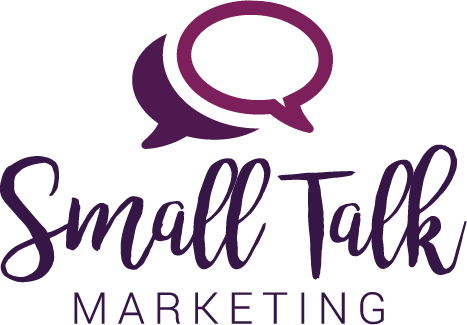How to Use Your Brand Board
Brand Board. Brand Guide. Brand Standards. There are many different names for what I refer to as a brand board. Regardless of what you call it, a brand board should be an important piece of your beauty business's strategy.
Why do I need a brand board?
Before I get in to why you need one, I want to explain what a brand board is. A brand board is a brief visual representation of your brand. It generally includes your logo, color palette and font selections. Depending on the designer it may also include an alternate logo, textures and maybe even a mood board. Small Talk's brand board's include a:
- Main logo
- Alternate logo
- Color palette
- Fonts
- Textures
On occasion, clients will ask us to create a mood board too. Here's another article on what exactly a Brand Board is and how to use it. So, now that we've discussed which elements to expect on the board, let's talk about why you need a Brand Board! A Brand Guide and Brand Standards include the same information, but usually go in to more detail on how the elements can be used. I find Brand Guide's to be more common with larger companies making a simple Brand Board the perfect fit for a MedSpa or beauty service provider.A document like this is necessary because it helps create consistency and cohesiveness throughout your marketing materials. When all of your materials look and feel a certain way, your clients and potential clients will start to recognize your brand and trust it. They will also get a feel for what they can expect from your business. Developing a brand also helps them understand your business's personality. Taking the time to develop your brand and a matching Brand Board, lays the foundation for your business to grow.
I got a Brand Board, now what?
After we finish the brand design process, one of the most common questions I hear is, "ok, I got this Brand Board, now what do I do with it?" In the next section, I will break down the elements of the board and possible ways to use them. To help you visualize what I'm referring to, I'm going to use my client, Pink Ivy MedSpa as an example! Here is her Brand Board. 
Main Logo
This one should be obvious but in case it's not your main logo is the visual identity of your business. It should be used on all your marketing materials, social media platforms and throughout your physical space.
Alternate Logo & Submarks
Your alternate logo, sometimes called a logo variation, can be used in place of your main logo. It is usually a design similar to your main logo but laid out differently to fit in different spaces. For example, some website designs work best with logos that have more of a horizontal format. So if your main logo was more of a vertical design, you may opt to use your alternate logo on your website if it were a horizontal design that fit better.Some Brand Boards we create include a submark. A submark is a less detailed version of your main logo that can be used similar to how you'd use a watermark. A submark could be used in the corner of before and after photos. It could also be used to incorporate your branding in your marketing materials without having to include your full logo.
Color Palette
Each color palette we design comes with the Hex codes associated with it. These codes can be plugged in to design software like Canva to help you create materials using your exact brand colors. These colors should be used on your website and throughout your marketing materials.
Fonts
Same as the color palette, you should try to use the same fonts on everything you create for your business. Variation is fine from time to time, but to create cohesiveness, I highly recommend sticking with your fonts across all you do.
Textures
This is the element I get the most questions on. Textures are patterns that coordinate with your branding. They can also be used to add depth and/or eye catching elements to your materials, while staying on brand. The two most common places I use textures are on websites and throughout social media graphics.Here is an example of how we used texture on Pink Ivy's website. This is the home page of her site. Towards the bottom, we used both of her textures to define sections of the page.Here is an example of a social media graphic where we used her fonts and textures. To wrap up, the elements on your Brand Guide should be at the heart of everything you create for the public to see. A strong brand goes well beyond looking good. It creates brand loyalty which ultimately creates revenue. If you are ready to create your brand, or spruce up your existing materials, contact me, we love branding projects!
To wrap up, the elements on your Brand Guide should be at the heart of everything you create for the public to see. A strong brand goes well beyond looking good. It creates brand loyalty which ultimately creates revenue. If you are ready to create your brand, or spruce up your existing materials, contact me, we love branding projects!
